Patri, Walsh, or Engen – Why the Spaniard should be Barcelona's starting No. 6
Examining each of Barcelona's available holding midfielders for the solution to their midfield dilemma
A big thanks and shoutout to Rivka and Om Arvind for the advice and commentary and another big thanks to Jesper Haglöf for the Viz.
Alexia Putellas’ absence so far has caused more headaches than was originally anticipated. Barcelona don’t seem to have that aura of invincibility they once did and while they still remain one of Europe’s most challenging tests, there’s been signs of perceived weakness in certain aspects.
A lot of the discussion has been pinpointed to the midfield and for good reason, given their talismanic midfielder’s injury, but the focus now has really shifted to the defensive midfield position. Some of the issues they experienced in defensive transition is partially down to the defensive midfielder which has in turn also affected their attacking movements. The transfer of Keira Walsh over the summer ensured Barcelona were both stacked in their midfield positions and able to continue the free-flowing football without adding pressure on Ingrid Engen. How Barcelona recreate their assertive, midfield dominance primarily comes down to their midfield setup. The ultimate question is: who is most suited to be Barcelona Femini’s defensive midfielder?
To answer this I’ll aim to analyse the problem at hand, explain the current setup, and then offer the best choice based on that.
Let’s go.
Structural Problems
Without re-explaining the issues at length, I’ll attempt to give a summary of the crux of the issue to provide a foundation. You can read my more in-depth analysis of Barcelona’s defensive structural shortcomings where I explained the issue at length. Barcelona’s biggest advantage and preference are building out centrally, with their strength in both progression and ball control coming from their midfielders. The main concern facing them is how teams are looking to press them high and play on their susceptibility to being crowded out of space.
As a result, teams are forcing Barcelona to go wide towards the full-backs, which causes them to stay deeper and disrupts their attacking structure. Though they can progress through the middle, it becomes precarious. If anything, the opposing sides want Barca to play through them to try and match them in midfield.
Verticality is important to Barcelona in the first phase and ensuring they funnel out is key to their attacking successes. The pressure applied in these key areas puts undue pressure on the defensive midfielder, forcing them to have to play each passing sequence perfectly. Even the best players will struggle to maintain this demand and as a result, their composure.
This, in turn, has had an adverse effect on attacking transitions. With Mariona Caldentey playing on the left, her role is to drift into the interior channels, sometimes into midfield, and create numerical superiorities there, but if the other interior midfielder needs to drop deeper to assist in build-up, then Barcelona lose a body in the forward line. It changes with Salma Paralluelo as the left-winger but we’ll park that discussion for another time.
Last season, Putellas’ greatest strength was her ability to drop deep enough to pick up possession (sometimes directly from the centre-backs), turn, and drive forward without needing Aitana Bonmatí or Mariona to commit further in midfield. There are moments where all three midfielders have to drop deep to bring the ball out, though not as regularly.
So as a defensive midfielder, how do you contend with creating and bringing balance to the side that is heavily dependent on your position? The answer lies somewhere in between, and not entirely on the player themself. While I will be discussing my choice of player in that position, I think it’s important to explain where I believe changes should be made in midfield before making that choice.
Midfield Conundrum
This leads us nicely to the other issue Jonatan Giráldez’s side face, which is the midfield composition. Giráldez’s choices in midfield have changed throughout the season, giving game time to Engen, Pina, Patri, and Walsh. Only Aitana is seemingly guaranteed a starting spot but more than the player, it’s the roles each of them occupies that determine how the team functions. Walsh is a world-class player and arguably was the best No. 6 during last summer’s European Championship. Seeing Walsh (and Patri) live gave me a bigger appreciation of their vision and intelligence in the position. Barcelona’s struggles haven’t necessarily come from Walsh’s introduction as the defensive midfielder, in my opinion, it’s partly come from the change in roles of the two other central midfielders.
The first tested solution was pushing Patri into a central midfield position, taking up the link and recycler role that was previously occupied by Aitana. It was then Aitana who took up the box-to-box role of being a prevalent presence in both boxes. Why the previous setup worked so particularly well was because of Putellas’ excellence at being able to take the ball from the back and efficiently progress it further up the pitch without committing more resources. It allowed Aitana to take up better positions further forward and create more attacking opportunities.
This sequence of play is a clear example of how Barcelona’s midfield efficiently progresses the ball from back to front, with Aitana dropping into space while Putellas takes up a central space with four Real Madrid players surrounding her. From here, the Catalan midfielder is able to drive and break the defensive line. This isn’t to say that Barcelona can’t do this anymore, but the consistency has slightly dropped with teams pouncing on it through thorough monitoring.
Now that we’ve understood the crux of the so-called problem, it gives me a clearer pathway to explaining who the No. 6 of choice is.
Midfield Composition – Aitana Bonmatí & Claudia Pina
With the players at their disposal, Barcelona Femini are not short of quality options in each of their midfield positions. Having said that, I would like to present prerequisites before diving into the options by making the assumption that the midfield setup would include both Claudia Pina and Aitana Bonmatí as the two starting central midfielders.
Both players have shown their quality throughout the season and while Aitana is a known quantity, it’s Pina who has indeed reminded us why she should be considered as the go-to central midfielder over Patri. Pina’s attributes resemble some of what Putellas has to offer, with her style of play very much that of an energetic, box-to-box midfielder with good vision and an adventurous passing range.


The 21-year-old isn’t afraid to pick up the ball to drive forward and play line-breaking passes, which is reflected in her goal contributions this season: 6 goals and 7 assists in 716 minutes, which is an excellent return and there’s a feeling of more to come from the diminutive midfielder.
The midfielder’s stats back her current form where she ranks top of Wyscout’s Expected Goals + Assists with 7.79 per 90 minutes and first in Expected Assists with 4.01 in Liga F. Even in construction, Pina looks to be busy and while she’s ranked ninth in through balls per 90 (1.74), she is second-highest for Barcelona players in the list with a total of 13 through balls so far (second-highest tally in Liga F so far).
What these figures signify is her willingness and proactiveness as a busy, forward-thinking midfielder who is constantly looking to find spaces and opportunities to play the ball forward. Pina’s inclusion might not replicate the Putellas role but it can (to a degree) give Aitana the freedom to adopt her previous role as the secondary link player and off-ball box runner from the right interior position. If Aitana can use Pina as the primary driver, she’s giving herself a lot more room to run the midfield.
A case for the starting No. 6
So, the three players in contention for the role are Ingrid Engen, Patri Guijarro, and Keira Walsh. Essentially, these are the pivot players that Giráldez will trust in the position and who can carry out the role effectively.
There are various different ways a pivot can be deployed. Players in this role have traditionally often been defensive midfielders acting as destructive presences. Nowadays, however, the position has expanded to midfield destroyers, deep-lying playmakers, holding midfielders, registas, and so on.
At Barcelona, you can define the role as the instigator and base of the team’s build-up and rest defence. While the role of the No. 6 is not just to ensure numerical superiority and deep-lying recycling, but to also enhance the two central midfielders as the role brings balance and composure to the side. When the team needs to rotate, defend, or find openings, it’s this player that initiates the process.

There is also the added responsibility of playmaking and playing line-breaking passes from deep to penetrate the opposition's midfield press. This makes the requirement of the position much more nuanced towards a playmaking controller rather than an all-action midfielder. All three of Walsh, Engen, and Patri have partial similarities to each other yet they also have some stark differences that bring a tinge of flavour to the role.
Here’s how I’d describe each player:
Patri Guijarro: A deep-lying playmaker with a delicate range of passing and keeping the side ticking over, Patri also possesses a few more traits which attest to her ability. She’s probably the most physical presence of the three, with the best spatial awareness where she’s able to read the play both in defensive and attacking situations. Her passing range mainly consists of shorter exchanges to provide continuity and momentum, making her the ultimate link player.
Keira Walsh: The 25-year-old is the type of talent that can control an entire tempo and dictate the initial possession sequence from deep. Walsh thrives on possession, using her excellent vision, and always searching for a creative pass forward. What really stands out with Walsh is her first touch and ability to play the ball out of pressure situations. Walsh can pivot, turn, and move in tight spaces and take the ball away from players – which comes in handy when playing in a deeper position. Walsh requires busier midfielders around her to do the running and athletic off-the-ball work but if protected well, she can transform herself into a defensive controller.
Ingrid Engen: Engen is a defence-first holding midfielder that predicates herself on eliminating threats as a priority over intricate passing. The 24-year-old came in with a reputation of being a decent possession-holder who could potentially develop her on-the-ball skills playing alongside world-class midfielders, and for the most part, she has. What Engen really thrives on is defensive transitions. As the No. 6, Engen thwarts counter-attacks and plugs in holes vacated by attack-minded players, whether it be the full-backs or the No. 8s. There’s even the possibility of her dropping in to play as a third central defender to rotate with Irene Paredes or Mapi León if they venture forward as ball progressors.
****
So having said all that, who is the best holding midfielder for the current Barcelona side? All three players bring a unique skill set that in suitable systems can showcase their world-class abilities. In some respect, Barcelona wouldn’t have signed Walsh nor Engen if they didn’t feel they were suitable for their tiki-taka style of football.
In my opinion, there is no better option than Patri Guijarro. The Spanish defensive midfielder is not only the most comfortable in the role but Patri’s on- and off-ball intelligence is sublime, and it’s how she’s able to control in-game situations that make her an impeccable player. Walsh and Engen are excellent pivot players, capable of controlling the game from a deep midfield position with the aforementioned techniques as the basis of their game, but Patri’s a better fit at present. The midfielder is essential to Barcelona’s transition game and acts as the main link for the midfield. Where she positions herself dictates and moves the opposing teams’ movement, pulling players out of position to open space in forward areas during Barca’s build-up phase.
Let’s compare three pass maps and to keep it consistent, I’ve taken this example from the recent game against Atletico Madrid. There are slightly contrasting outputs that can also be seen in Patri’s, Engen’s, and Walsh’s pass maps. Patri’s seems littered with randomness but there is one critical thing to take out of it – pass direction.
Most of her passes are directed horizontally but with purpose. You can observe how the length of most of these passes is much shorter compared to her two teammates, which means she’s looking to find the closest player to keep possession moving. The closer Patri gets to the box, the more inaccurate passes appear, and though this is a sample size of one game, it partially represents her comfort in playing deeper. The main difference with her and Engen's/Walsh’s pass maps is the length of the pass with Walsh’s being a lot more purposeful with longer passes.
As Barcelona build out from the back through a sea of opposition, Patri is at the heart of the move. She moves quickly between the lines, starting the initial sequence before playing the final line-breaking pass to split the Real Madrid defence open. This burst of acceleration and precision gives her the edge in physical midfield battles.
Patri’s constant scanning is not only effective in her passing, but also in defensive situations. With Patri in the side, the risk is minimised for her fellow midfielders when they push forward, knowing her immaculate positioning and movement ensures cover. It’s this intellectual spatial awareness that empowers the team to press tighter and higher, and given how she wins the ball in high-value areas, it’s why Barcelona are able to play higher up the pitch. Patri’s duels map (vs Sevilla) shows just why she’s so important in midfield, regardless of position.
In dynamic defensive transitions, Patri is able to identify and anticipate the danger. Like in the examples, Patri uses a combination of physicality and intelligent positioning to tackle a situation and ensure Barcelona are not only removed from the current danger, but are also put back on the front foot again.
The data becomes an interesting point of reference because of what it represents. It’s noticeable that Engen doesn’t outperform the other two in most metrics besides aerial duels per 90, while Walsh is presented as a pass-heavy progressor with good tackling. Patri is arguably the most well-rounded of the three players, covering and averaging higher in more metrics.
In my mind, Walsh is a close second to the Spaniard but perhaps misses out due to requiring a bit more adaptation to the system and league, otherwise she’s a player that’s tailor-made for this brand of football. Engen is much more suited when Barcelona are under heavy counter-attacking pressure, needing a solid defensive presence and can very easily come on to shore up the defence and protect them against the counter. If Barcelona were to ever play a double-pivot, then Engen has a very real possibility of being a starter.
This is perhaps Giráldez’s biggest conundrum going forward, and if the Spanish champions are to continue to embrace this challenge and emerge triumphant in light of all of this, the triumvirate will need to step up and deliver a consistent midfield masterclass.
Photo by Eric Alonso/Getty Images
Photo by Fran Santiago/Getty Images

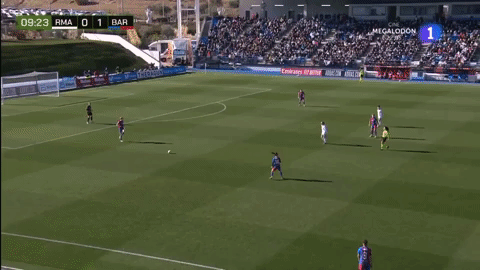
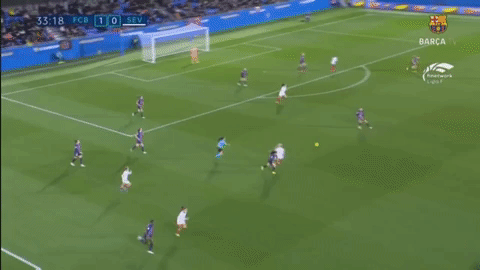

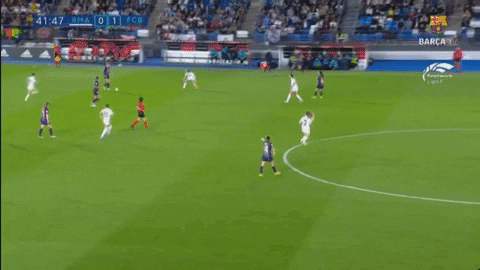

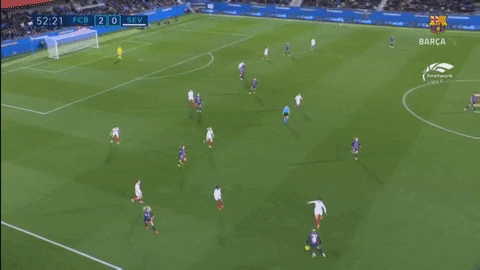
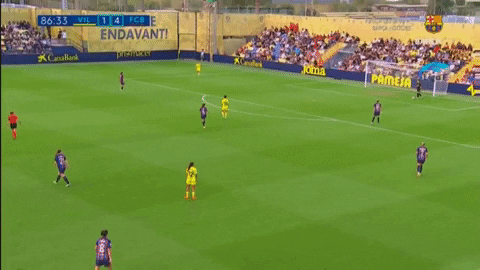

Fantastic article. I wish The Athletic had deep dives about women's football like this one.... you should pitch to them as a writer.
great article
They should play in a 4-2-3-1 formation with both Patri and Walsh as holding mid
The only game that they moved the ball well this season was at Camp Nou against Bayern which was also Walsh best game this season
Also last season the two games that they moved the ball the best were at Camp Nou in the UWCL